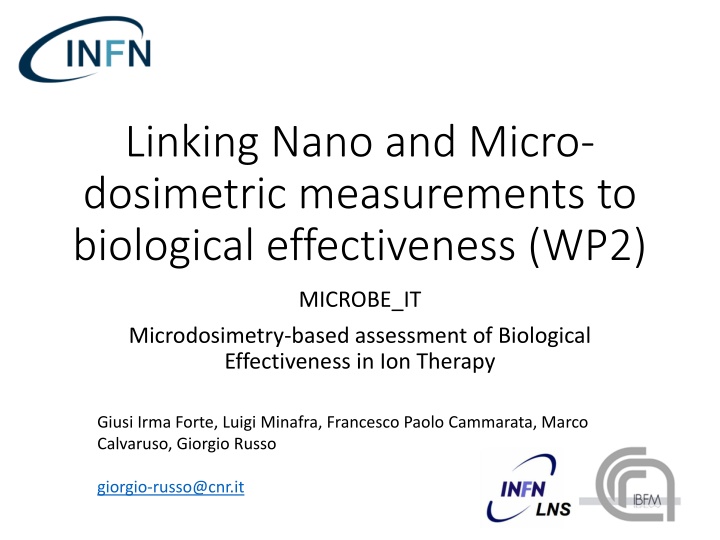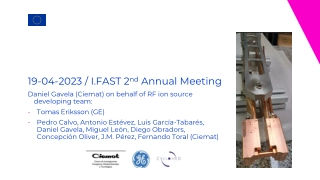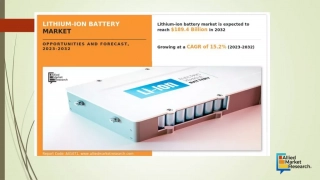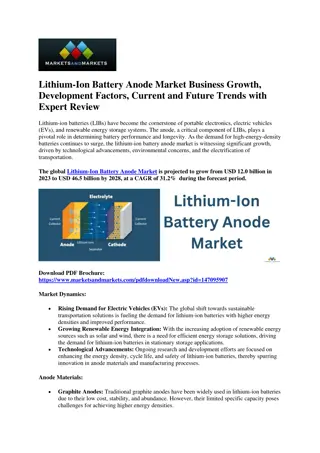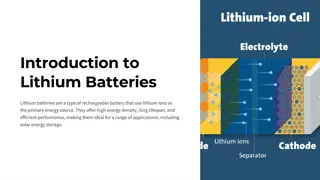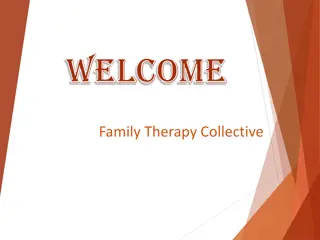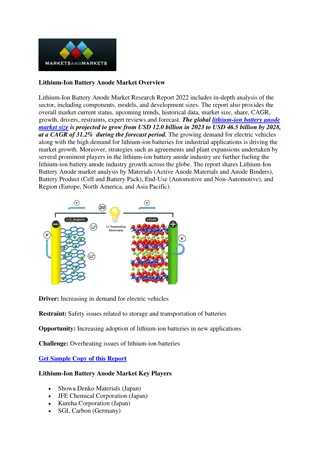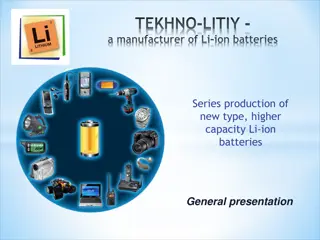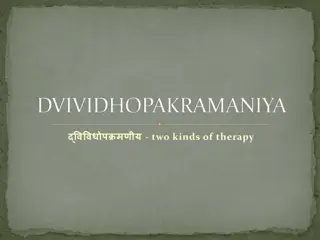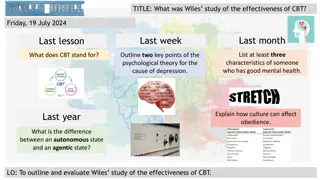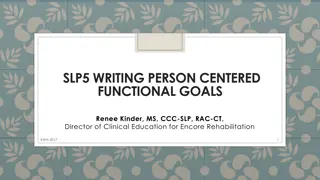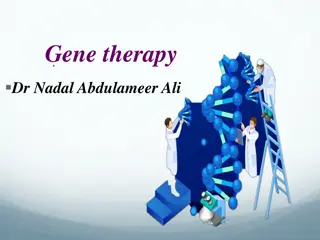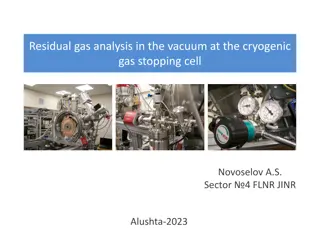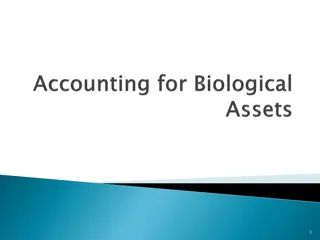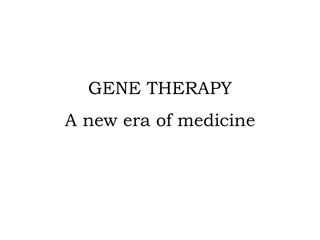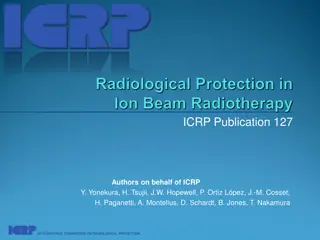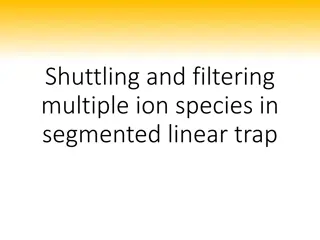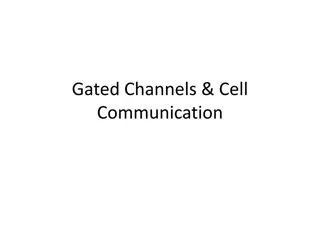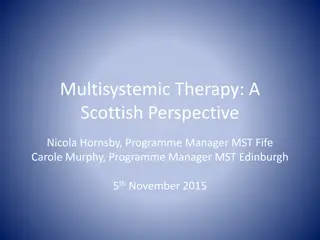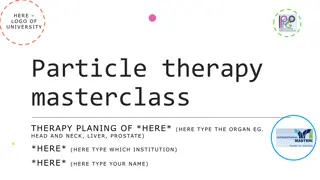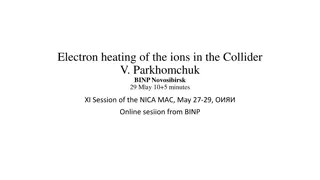Microdosimetry-based Assessment of Biological Effectiveness in Ion Therapy
This study focuses on linking nano and micro-dosimetric measurements to biological effectiveness in ion therapy. It explores DNA repair mechanisms, particularly Non-Homologous End-Joining (NHEJ) and Homologous Recombination (HR), and their impact on cell survival fractions under split-dose irradiation conditions. Radiobiological experiments and milestones involving proton and carbon ion measurements at different facilities are discussed.
Download Presentation

Please find below an Image/Link to download the presentation.
The content on the website is provided AS IS for your information and personal use only. It may not be sold, licensed, or shared on other websites without obtaining consent from the author.If you encounter any issues during the download, it is possible that the publisher has removed the file from their server.
You are allowed to download the files provided on this website for personal or commercial use, subject to the condition that they are used lawfully. All files are the property of their respective owners.
The content on the website is provided AS IS for your information and personal use only. It may not be sold, licensed, or shared on other websites without obtaining consent from the author.
E N D
Presentation Transcript
Linking Nano and Micro- dosimetric measurements to biological effectiveness (WP2) MICROBE_IT Microdosimetry-based assessment of Biological Effectiveness in Ion Therapy Giusi Irma Forte, Luigi Minafra, Francesco Paolo Cammarata, Marco Calvaruso, Giorgio Russo giorgio-russo@cnr.it
Radiobiology experiments for GSM2 development and verification (1) DNA Double Strand Breaks Repair Mechanisms DNA Damage Response High-LET particles generates DSBs Features Homologous Recombination (HR) More Complex Longer (7 hours or more) Error-Free Non Homologous End Joining (NHEJ) Less Complex Faster (30 mins) Error-Prone Prevalent in mammalians DSB are mainly responsible of acute cell killing, causing a greater quote of non-reparable or mis-repaired DNA damages. Since NHEJ is often accompanied by deletion or addition of nucleotides, NHEJ potentially compromises genetic information Varga T, et al. DNA Repair 2005
Radiobiology experiments for GSM2 development and verification (2) Characterization of Non-Homologous End-Joining (NHEJ) driven by High-LET Particles in non-tumorigenic breast epithelial cell line MCF10A In vitro evaluation of the influence of split-dose irradiation on survival fractions by means of clonogenic assay In vitro evaluation of split dose-irradiation effects on NHEJ and DSBs key markers (Ku70, 53BP1 and H2AX) by western blotting analysis.
WP2 - Milestones M2.3 measurements with protons at TPTC (Month 1-12) Radiobiological M2.4 measurements with carbon ion at CNAO (Month 1-12) Radiobiological CNAO availability for COVID will be very hard to obtain milestone 2.4
